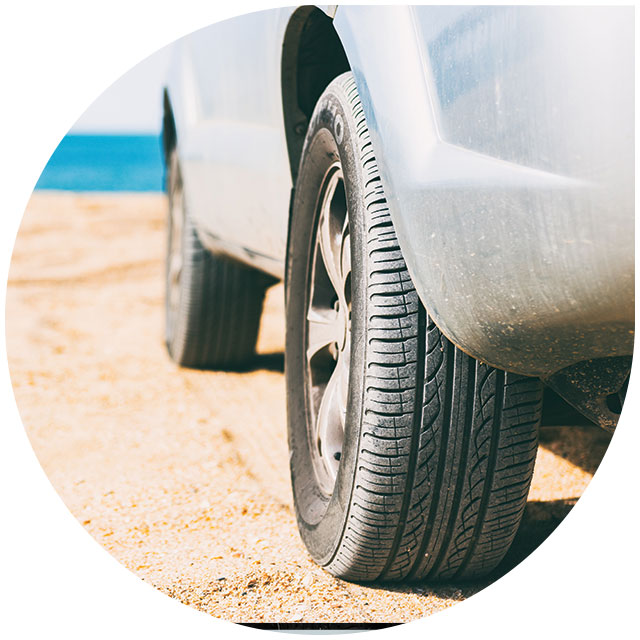Summer Tires
- Shorter braking distances on dry and wet roads.
- Better stability at higher speeds.
- Lower fuel consumption thanks to lower rolling resistance.
Summer tires are designed for driving in higher temperatures, typically above +7°C. They feature a harder rubber compound that provides better traction on both dry and wet surfaces. The tread of summer tires has less deep grooves than winter tires, improving vehicle stability during high-speed driving and shortening braking distances.
Fun fact :
Summer tires wear out much faster when used in winter temperatures – their rubber hardens, which reduces traction and driving safety.

Wondering which summer tires are best for your car?
Before making a decision, it’s worth reviewing the results of independent summer tire tests prepared by ADAC and leading automotive websites and magazines. We also provide our own ranking, based on the opinions and experiences of our customers, to help you choose proven and safe tires for the summer season.
The most popular summer tire diameters
⌀ 13″
⌀ 14″
⌀ 15″
⌀ 16″
⌀ 17″
⌀ 18″
⌀ 19″
⌀ 20″
⌀ 21″
⌀ 22″
Cheap summer tires – good and proven models at a low price
Looking for affordable summer tires that will ensure safety and driving comfort? A low price doesn’t have to mean sacrificing quality! Our online store at www.motopon.pl offers a wide selection of affordable summer tires from renowned economy-class manufacturers. We offer durable models that are perfect for everyday city driving and on the road.
Affordable summer tires are an excellent choice for drivers who value a good price-to-quality ratio. While they may have slightly more modest specifications than premium tires , they guarantee safety, stability, and driving comfort. Check out our selection and choose affordable summer tires that are perfect for your car!
When to replace summer tires with new ones?
Wondering when to replace your tires? Tread depth is a key indicator. Legally, the minimum tread depth is 1.6 mm. Tires worn below this level lose their handling characteristics and are unsafe on the road.
However, it’s worth knowing that tread depths below 4 mm significantly reduce traction and water drainage, especially on wet surfaces. Summer tires with tread depths below 4 mm can extend braking distances and increase the risk of aquaplaning .
If you want to drive safely, we recommend replacing your tires with new ones when the tread reaches 4 mm. Check out our selection and choose safe summer tires tailored to your needs!
Summer tires from A to Z
Summer tire markings – how to read them before buying?
Planning to buy summer tires? Before choosing the right model, pay attention to the markings on the tire sidewall. They contain key information that will help you choose the right tires for your car.
The most important summer tire designation is the tire size—written in a format such as 205/55 R16—which indicates the width, profile, and rim diameter. The DOT symbol, which indicates the tire’s production date (week and year), is also crucial.
It’s worth knowing that summer tires, unlike winter tires, don’t have special markings regarding seasonal properties. Therefore, before purchasing, check the size, production date, and other parameters to choose safe and properly fitting summer tires.
Types of summer tire tread – what is worth knowing?
When choosing new summer tires, it’s worth paying special attention to the tread pattern. Tread patterns vary depending on the model and have a key impact on safety and driving comfort. A proper tread design ensures effective water drainage, reduces the risk of aquaplaning , and provides better traction on wet surfaces.
Low rolling resistance is also important for summer tires, which translates into lower fuel consumption and greater savings. A well-chosen tread improves vehicle handling, driving stability, and shortens braking distances in various road conditions.
Check out the different types of summer tire treads and choose the model that suits your driving style and the conditions you most often drive in.